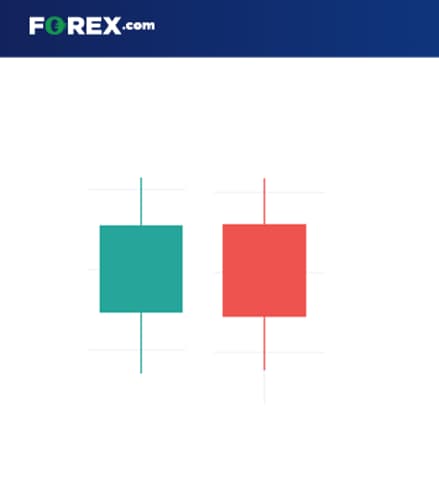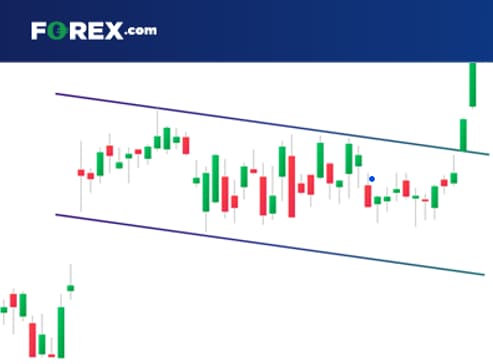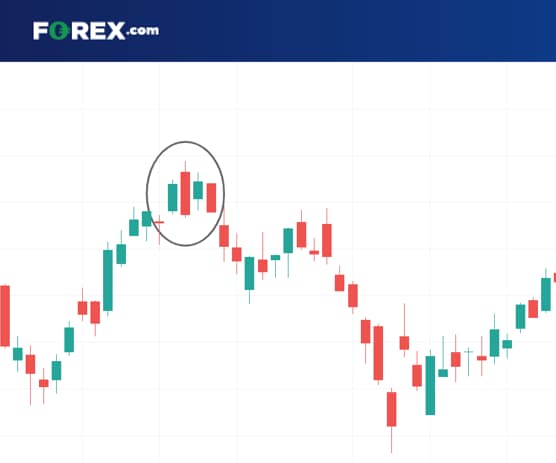
Price action is a method of analysis that removes ‘noise’ from charts and focuses on pure price movements. Discover how to read price action and the price action strategies you should be using.
What is price action trading?
Price action trading is the technique of making every decision based on a pure or ‘naked’ price chart. Traders just focus on candlestick patterns and drawing tools rather than relying on technical indicators.
The theory of price action trading goes so far as to say there’s no need to analyse economic data to understand markets, as all price-moving events will be reflected on a chart.
But price action is quite subjective – two traders might interpret the recent price history completely differently. That’s why it’s always important to understand your trading psychology and have a trading plan in place to avoid making decisions based outside of your own rules.
Does price action trading work?
Price action trading does work as a trading system, but no method is perfect, or traders would have a 100%-win rate. However, price action strategies are accurate a lot of the time, which is why a lot of traders will use them as a base.
Most analyses will combine price action with indicators such as moving averages to confirm any signals given.
How to read price action
To read price action, the most important tool is a chart because it shows the price and time period. Candlestick charts are the most popular because all the information needed is available at a glance.
A candlestick will display the high, low, opening and closing prices (HLOC) of an asset over a specified period. You can set your timeframe, whether each candle represents a month, week, day, hour or just a minute.
On most trading platforms – including FOREX.com's – a candle with a higher closing price than an opening price will be shown as green, this is commonly known as a bullish candle because the buyers have had more control in the session. Whereas a candle with a lower closing price than its opening price is red, and known as a bearish candle because sellers were stronger.

Just these candles alone can tell traders a lot about price action, but as time moves on and more candlesticks appear on the chart, it gives us patterns. And these patterns are what help price action traders find opportunities.
Price action trading strategies
Most price action trading strategies revolve around patterns. Candlestick patterns can give indications of where a market’s price will go next – whether it will reverse or continue, and whether it will fall or rise.
It’s important to note that just because a pattern has had an outcome previously, it doesn’t always guarantee future results.
Let’s take a look at some of the most common price action patterns and the strategies that are based on them.
Price action continuation trading
Continuation patterns occur in the body of an ongoing trend and indicate that the market is likely to move in the same direction.
The strategy behind price action continuation trades is to wait for the pattern to form and trade in the direction of the existing trend. Examples of continuation patterns include flags, pennants, rectangles and triangles.
Let’s say a bull flag pattern is formed. This is when a market in an uptrend enters a period of consolidation between support and resistance lines before breaking out to the upside again.
The original uptrend is the flagpole, followed by the consolidation forming the flag.

Price action traders would look to wait for the breakout before entering the trade to avoid a false signal. They’d then look to use the lowest point of the consolidation range as their stop-loss level.
Price action breakout trading
When breakouts occur, the main concern for price action traders is to determine whether the new trend is a genuine one or a false signal. An inside bar breakout pattern can help us understand whether the breakout is going to be resisted or not.
The pattern forms when one or more candles trade completely within the high and low of the large breakout candle. It tells us that market participants are ready to defend the breakout and push on with the new trend forming. The inside bars are usually followed by a secondary breakout bar that confirms the new movement is underway.

In the example above, we have a red breakout bar, followed by two ‘inside’ bars, and a secondary breakout lower. A price action trader would look to enter the market at the lowest price of the inside bar and set a stop loss at the top of it to manage their risk.
Price action retracement trading
Price action retracement trading strategies involve using trendlines to find optimal entry points in markets that are trending.
In an uptrend, a trendline would be drawn on the chart from one swing low to a subsequent one, and the line would be extended past the existing price. This is what’s known as a ‘trendline support’ – this differs from traditional support levels because it should rise or fall in line with the trend.
The idea is to place a few entry orders at different prices along the trendline, so that should the market retrace back down, one of the orders would automatically enter the market at a more advantageous price.

In this example, the trendline is drawn from a low, up to a second swing low. If the trader had put entry orders periodically along the line – where the circles on the chart are – they would have a trade ready to join the uptrend.
Horizontal trendlines can also be used in ranging markets to map out support and resistance areas.
It’s important to note that strategies based solely on trendlines aren’t always successful – given they don’t provide specific indications of where to place entry orders. Traders would normally use trendlines in conjunction with other patterns to confirm the entry points, or Fibonacci retracements.
Advanced price action strategies
Some price action strategies are more advanced than others because the patterns they’re based on either happen extremely quickly or require more time to spend monitoring markets. Let’s take a look at a couple of examples.
Price rejection trading strategy
Price rejection occurs when the market price tries to move through a support or resistance level, but then reverses. Rejections are considered advanced moves because they result in a fast move in the opposite direction.
A price rejection trading strategy is based on candles that have a long wick – known as a pin bar pattern.

A candle with a long upper wick shows that within the period, buyers had attempted to push the market price higher and were successful for a while, but sellers re-entered the market and managed to return prices lower again – almost back to the opening price.
When a bearish pin bar forms, a price action trader would usually back the sellers again, believing it’s a sign the market is going to reject the move higher. They can either enter straight away or wait for a confirmation signal in the next candle. In the example above, the next candle is bearish.
Head and shoulders reversal strategy
The head and shoulders chart pattern is one of the most common reversal patterns and is found in uptrends. The pattern is often considered more advanced purely for the time it takes to form, which requires traders to monitor the market closely.
It’s made up of a high (shoulder), followed by a higher high (head), and then a lower peak (shoulder). A ‘neckline’ can be drawn by connecting the lowest points of the two troughs.

With this formation, a price action trader would expect the price to reverse from a previous uptrend. The entry order would be placed below the neckline, to automatically enter into the new downtrend.
Traders can place a stop loss at or above the peak of the final shoulder – depending on your risk tolerance. You could calculate a profit target by measuring the high point of the head to the neckline and subtracting that same distance from your entry level.
This distance is approximately how far the price will move lower after it breaks through the neckline.




